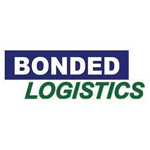7 Effective Strategies on How to Improve Inventory Management for Your Business
As businesses strive for efficiency, inventory management stands as a cornerstone of success. If you’re searching for ways to gain control of your inventory, look no further. This article cuts through the noise with seven straightforward strategies on how to improve inventory management. Expect to uncover insights on tech advancements, warehouse optimization, and dynamic supplier engagement ready to be applied to your business operations.
Key Takeaways
- Implementing advanced inventory management software and mobile barcoding systems helps streamline inventory control, reduce errors, and improve real-time data accuracy.
- Optimizing warehouse operations through better layout design, efficient storage solutions, and effective order picking strategies can significantly enhance overall productivity and efficiency.
- Building strong supplier relationships with proactive communication and performance monitoring, ensuring demand forecasting accuracy, and establishing solid inventory control policies are all critical for maintaining optimal inventory levels and operational fluidity.
Optimizing Inventory Management with Technology
Technology has always played an integral part of inventory management. For small businesses to global corporations, the use of technology helps determine how well we manage our inventory.
But how exactly can technology optimize inventory management? Let’s explore the role of inventory management software and mobile devices in transforming inventory management.
Inventory Management Software
Imagine having real-time access to your inventory data across all sales channels, uniform information across all inventory locations, and the ability to scale as your business grows. These are not far-fetched dreams, but realities made possible by an inventory management system. This inventory management software, also known as inventory software, automates tasks, frees up time for critical activities, and provides businesses with actionable insights through an efficient inventory management process. By managing inventory effectively, you can ensure that your business thrives and stays ahead of the competition.
Software features like barcode scanning, setting reorder points, app integration, and demand forecasting improve inventory management, making it more accurate and effective. By implementing an inventory control system, these features also help to improve inventory control, ensuring a streamlined process for businesses.
Mobile Devices and Barcoding Systems

Barcoding systems and mobile devices are the unsung heroes of inventory management. Barcodes reduce human error in data entry and inventory movement tracking, while mobile devices provide real-time data updates, ensuring inventory and sales figures are always accurate.
Dedicated RF mobile computers offer a powerful combination of features and durability that many businesses rely on.
Related: A Guide to Warehouse Inventory Management: Best Practices and Tips for Success
Streamlining Warehouse Operations
A well-organized warehouse is like a well-oiled machine. It runs smoothly, with every component working in harmony. Streamlining warehouse operations can significantly improve efficiency and quick access to products. Let’s delve into how optimizing warehouse layout, implementing proper storage solutions, and using efficient order picking methods can transform warehouse operations.
Warehouse Layout Optimization
Picture a warehouse where materials, workers, and equipment flow seamlessly. This is the result of an optimized warehouse layout. Warehouse design not only maximizes space utilization but also affects company profitability by optimizing product flow.
From shelving and equipment placement to considering worker safety, every aspect of the warehouse layout contributes to efficiency.
Related: Warehouse Layout and Design: Tips for an Efficient and Optimized Operation
Proper Storage Solutions
Proper inventory management includes efficient storage solutions, which serve as the backbone of inventory management. Different products require specific storage methods, and a well-organized storage area enables efficient inventory management.
By matching SKUs to suitable storage methods and maximizing unused vertical space, businesses can significantly enhance warehouse operational efficiencies.
Efficient Order Picking Methods
Order picking is the heart of warehouse operations. Efficient order picking methods such as pick to light systems, augmented reality, and voice picking technology not only enhance accuracy but also assist in locating inventory quickly. By generating efficient picking routes and aligning picking technology with product SKUs and volume, warehouse management systems can significantly increase productivity and reduce travel time.

Enhancing Supplier Relationships
When it comes to inventory management, suppliers aren’t just vendors; they’re valuable partners. Strong supplier relationships are vital for timely inventory delivery and maintaining accurate levels within a business. But how can businesses cultivate such relationships? It all starts with effective communication, collaboration, and performance monitoring.
Communication and Collaboration
Communication and collaboration are the cornerstones of strong supplier relationships. Proactive communication sets expectations for lead times, plans inventory levels, and reduces order fulfillment errors.
Regular meetings with suppliers alleviate concerns, address issues, and strengthen relationships, contributing to a more reliable supply chain.
Performance Monitoring
Monitoring supplier performance is like keeping a pulse on the health of the supply chain. It ensures timely deliveries, efficient transportation cost management, and enhances lead times and reliability. Using tools like the RACI matrix for communication roles and assessing supplier criticality can help businesses prioritize monitoring and foster a culture of continuous improvement.
Implementing Demand Forecasting Techniques
In the world of inventory management, prediction is power. Demand forecasting techniques arm businesses with insights to maintain optimal stock levels and maximize sales and profit. But how can businesses accurately predict customer demand? Let’s explore the role of data analysis and AI tools, and the importance of balancing inventory levels in demand forecasting.
Data Analysis
Data is the new oil, and thorough data analysis is the method by which valuable insights are extracted. Through data analysis, businesses can accurately forecast demand and make informed inventory decisions. This process involves examining historical sales data, market trends, competitor activity, and other external factors such as seasonal changes or economic indicators. By understanding these elements, companies can anticipate customer needs more accurately and plan their inventory accordingly.
Balancing Inventory Levels
Balancing inventory levels is like walking a tightrope. Too much inventory can tie up cash, while too little can lead to stockouts and lost sales. To maintain balance, businesses need to implement inventory management processes, such as replenishment processes, safety stock, and regular forecasting reviews.
By mitigating the effects of demand variability on inventory levels, businesses can adapt more effectively to market changes.

Establishing Inventory Control Policies
Just like a ship needs a compass to navigate the seas, businesses need inventory control policies to guide their inventory management. Safety stock levels, regular audits, and minimizing shrinkage are key policies that ensure smooth sailing in inventory management.
Let’s delve deeper into these policies.
Safety Stock Levels
Safety stock is the lifeboat that keeps businesses afloat in case of unexpected inventory shortages. It prevents stockouts that disrupt the supply chain and ensures businesses can cope with stocking delays and temporary outages.
By calculating safety stock based on past demand forecast accuracy and maintaining consistent inventory levels, businesses can mitigate risks from market variability.
Regular Audits
Regular audits are the spotlight that illuminates discrepancies in inventory management. Systematic approaches like cycle counting help maintain accurate inventory levels and avoid time-consuming year-end physical inventory checks, while keeping precise inventory records.
Implementing efficient auditing methodologies like weight scale counting and conducting sample-based audits provides improved productivity and accuracy.
Minimizing Shrinkage
Shrinkage might sound like a minor issue, but it can have a major impact on inventory management. It represents the loss of inventory due to factors like theft, damage, or administrative errors.
Through security measures like CCTV cameras, tracking devices, and employee accountability, businesses can keep shrinkage to a minimum and safeguard their inventory.
Focusing on High-Value Products
In the sea of SKUs, not all products are created equal. High-value products often drive the majority of profits. Prioritizing these items and categorizing inventory according to their value and quantity can optimize forecasting and stocking policies.
Let’s delve into how categorizing inventory and prioritizing best-selling items can drive revenue and improve inventory management.
Categorizing Inventory
Categorizing inventory is like organizing a library. It makes finding what you need easier and more efficient. ABC inventory analysis categorizes SKUs to organize items effectively and reduces waste.
By segmenting inventory based on the value and quantity of the items, businesses can efficiently allocate resources during audits.
Prioritizing Best-Selling Items
Best-selling items are the stars of inventory management. Prioritizing these items maximizes revenue and improves inventory turnover, making it a strategic imperative for effective inventory management.
By clearing out slow-moving and obsolete excess inventory, businesses prevent potential losses and free up cash for areas like marketing.

Adapting to Industry Trends and Market Changes
In the ever-changing business landscape, adapting to industry trends and market changes is key to survival. Businesses that actively monitor industry trends are better positioned to make informed decisions. But how can businesses stay ahead of the curve?
Let’s explore how monitoring industry trends and adapting to market changes can lead to higher business growth and profitability.
Monitoring Industry Trends
In the fast-paced world of inventory management, staying informed about industry trends is crucial. Regular analysis of market trends and consumer behavior can help businesses adapt their inventory strategies proactively. By exploring supply chain data and industry insights, businesses can find new ways to improve efficiency and achieve a comprehensive inventory management plan.
Adapting to Market Changes
Change is the only constant in business. Adapting inventory management to market changes involves optimizing inventory turnover, offering competitive pricing, and aligning inventory decisions with sales, marketing, finance, and operations.
From investing in employee training to tailoring inventory offerings to specific groups, various inventory management strategies can help businesses adapt to market changes and stay competitive.
Elevate Your Inventory Management with Cadre Technologies’ WMS Software
In the world of inventory management, having the right partner can make all the difference. Cadre Technologies’ Warehouse Management System (WMS) software emerges as a pivotal ally, offering a suite of features designed to streamline your operations and enhance efficiency. Our WMS software is tailored to meet the unique demands of your business, whether you’re a small enterprise or a global corporation, ensuring that your inventory management is not just a task, but a strategic advantage.
Top Features and Benefits:
- Real-Time Inventory Visibility: Gain instant access to your inventory levels across all locations and sales channels. Our WMS software ensures that information is uniform and up-to-date, allowing for precise decision-making and planning.
- Efficient Order Processing: With features like barcode scanning and automated reorder points, our system streamlines the order processing workflow, reducing errors and improving fulfillment accuracy. This leads to happier customers and a healthier bottom line.
- Advanced Reporting and Analytics: Make informed decisions with our comprehensive reporting tools. Understand your inventory trends, identify opportunities for improvement, and forecast demand with greater accuracy.
- Scalability: As your business grows, our WMS software grows with you. Easily scale your operations without compromising on performance or efficiency, ensuring that your inventory management system is a long-term solution.
- Cloud-Based Flexibility: Our cloud-based WMS solutions offer the scalability of effortless adjustment of your WMS to align with your business’s evolving demands, including handling seasonal peaks efficiently. Furthermore, the cloud model significantly reduces initial expenses, as there’s no need for a substantial investment in hardware.
- Customizable Solutions: We understand that no two businesses are the same. That’s why our WMS software is designed to be customizable, allowing you to tailor the system to your specific operational needs and challenges.
- Seamless Integration: Integrate seamlessly with your existing ERP systems, eCommerce platforms, and other essential business tools. This ensures a cohesive and efficient workflow across all departments and systems.
By choosing Cadre Technologies’ WMS software, you’re not just adopting a tool; you’re embracing a comprehensive solution that addresses the core challenges of inventory management. Our software is designed to help you maintain optimal inventory levels, improve warehouse productivity, and ultimately, drive your business towards greater success.
Summary
In the journey of inventory management, we’ve navigated through various strategies, from optimizing inventory management with technology to adapting to industry trends and market changes. We’ve seen how inventory management is not just about storing and selling products but about making informed decisions, building strong relationships with suppliers, and staying agile in the face of market changes.
To streamline your inventory management process and embrace the full potential of these strategies, consider leveraging our WMS software. With features designed to optimize inventory control, improve real-time data accuracy, and enhance overall operational efficiency, our solution is tailored to support your business’s growth and adaptability in a dynamic market.
Ready to elevate your inventory management to the next level? Discover how our WMS software can transform your business operations. Contact our inventory management experts today to learn more and schedule a demo. Let’s make your inventory management more efficient, together.
Frequently Asked Questions
How do you manage inventory effectively?
To manage inventory effectively, consider implementing techniques like using WMS software, automating inventory systems, leveraging real-time data and analytics, and using demand planning tools to forecast accurately. These steps can help improve efficiency and increase revenue.
How do you overcome poor inventory management?
To overcome poor inventory management, you can set minimum stock levels, understand your supply chain, get flexible with your SKUs, move slow-moving inventory out, and minimize shrinkage. Improving inventory management will involve deploying an inventory management system, focusing on safety stock levels, and establishing seamless communication channels.
What is the role of technology in inventory management?
Technology plays a crucial role in optimizing inventory management by providing real-time tracking, uniform data, and scalability through inventory management software, while mobile devices and barcoding systems enhance inventory tracking and reduce errors. Embrace technology to improve your inventory management process.
What are three tools used to improve inventory management?
To improve inventory management, consider utilizing Pull Strategy, Push Strategy, and Just-in-Time Inventory Management as they help balance customer demand responsiveness with cost-efficiency.
Why is enhancing supplier relationships important?
Enhancing supplier relationships is important because it ensures timely inventory delivery and accurate inventory levels in a business, achieved through effective communication and collaboration.













